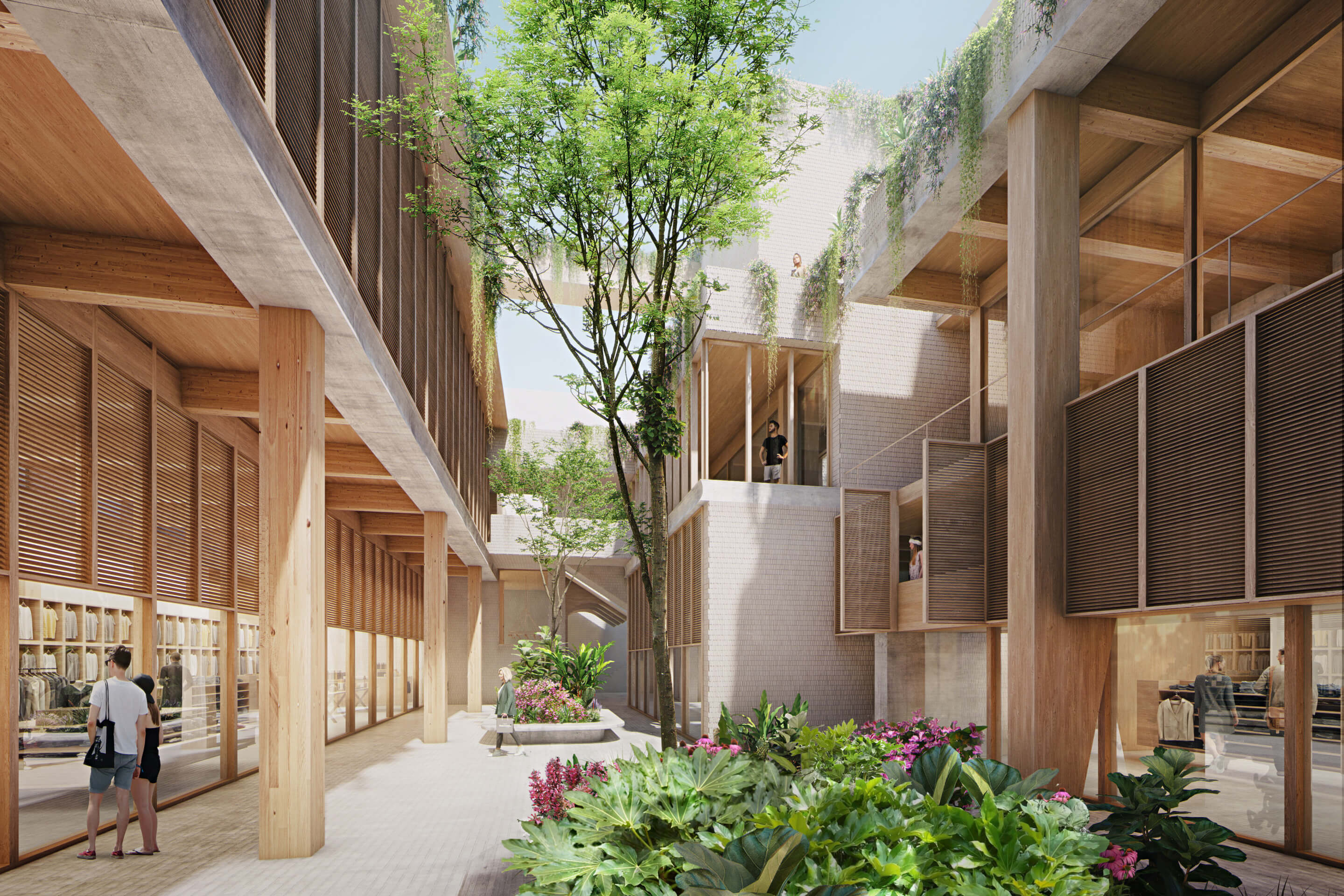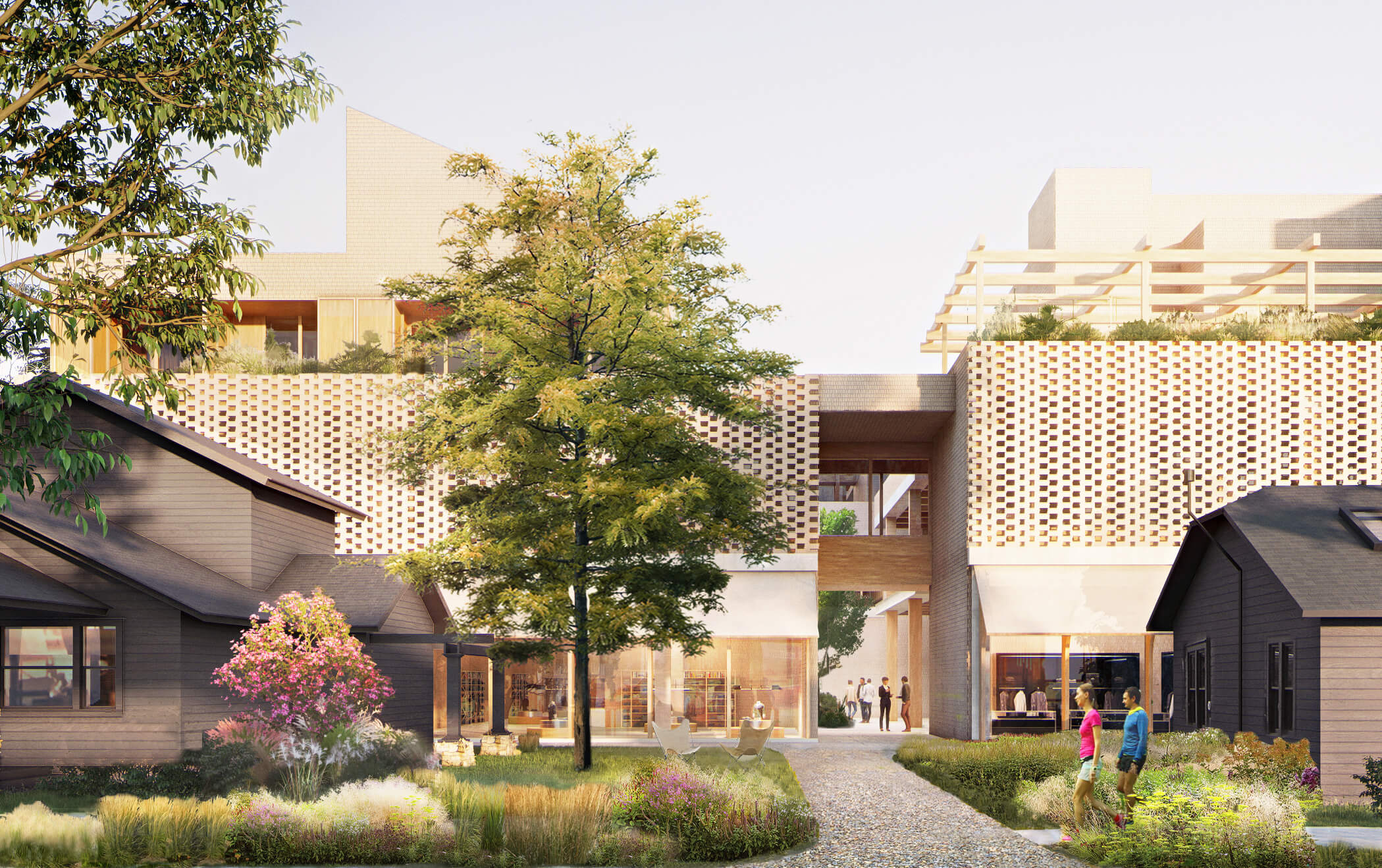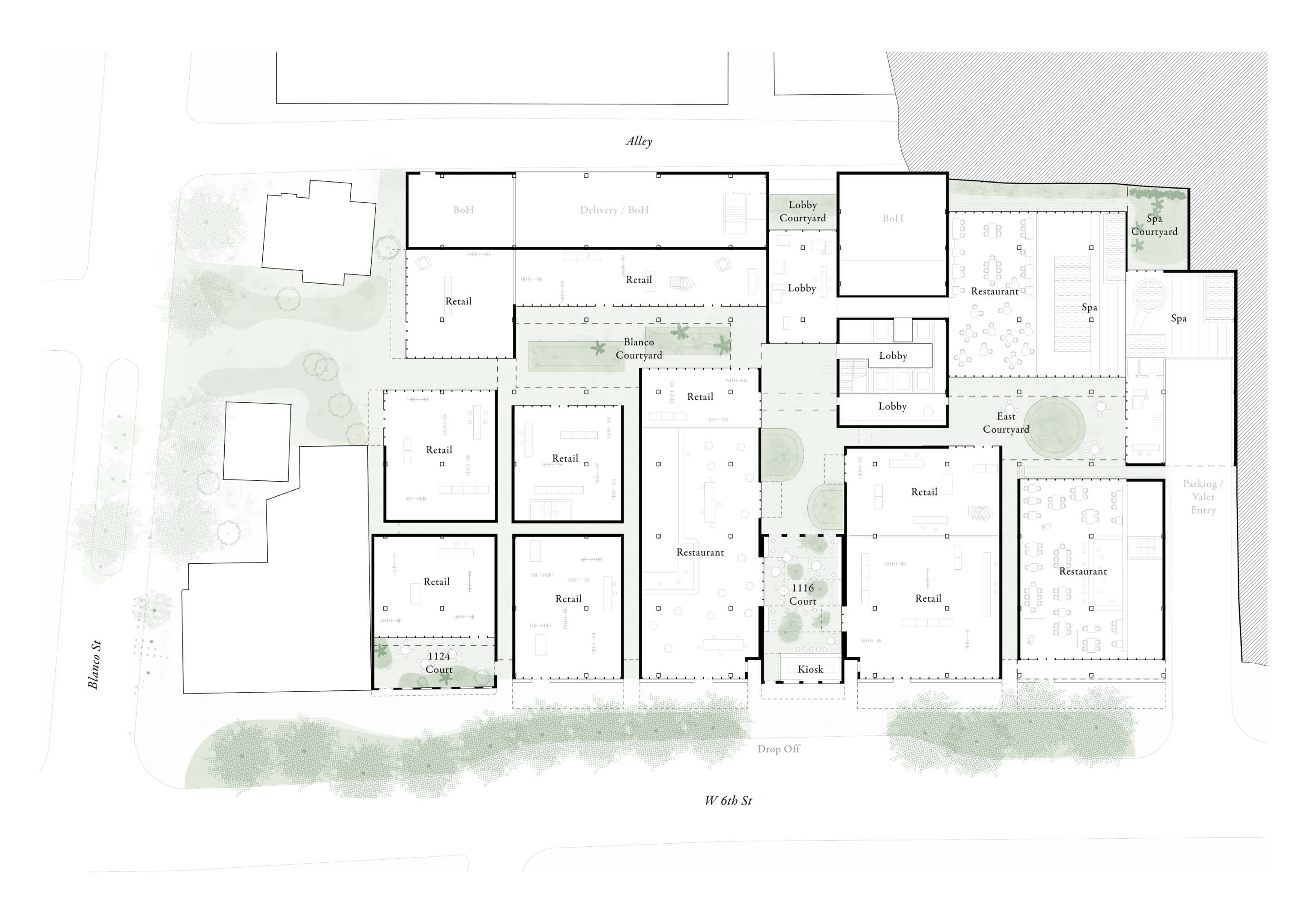Herzog & de Meuron reveals design for mass-timber mixed-use development in Austin
Herzog & de Meuron has pulled back the curtain on Sixth & Blanco, a mixed-use infill development encompassing an entire city block in Austin’s historic Clarksville neighborhood, just west of the Texas capital city’s downtown core.
The low-slung mass-timber project features an “urban carpet” of restaurants and retail at street level topped by offices, a hotel, and apartments on the third and fourth floors, which “steps back from the street and decreases in density as it grows taller, allowing for a network of exterior circulation spaces with gardens, courtyards and porches on all levels,” the firm detailed. As recently released renderings show, the wood-clad structure (technically a cluster of breezeway-separated buildings oriented around a central plaza and multiple internal courtyards) doesn’t so much insert itself into streetscape but but politely slinks behind it, rising behind and above existing homes and storefronts fronting West 6th Street in deference to the historic fabric of Clarksville.

Sixth & Blanco isn’t the first project in Texas—or in Austin, for that matter—taken on by the Pritzker Prize–winning Swiss firm. Three years before their 2001 Pritzker win, Jacques Herzog and Pierre de Meuron were commissioned to design the Blanton Museum of Art at the University of Texas at Austin. The duo pulled out in 1999 after deciding that “it would not be practical to bridge differences over the interpretation of the project in the context of the Campus Master Plan,” the university said at the time. The conflict and Herzog & de Meuron’s subsequent withdrawal from the high-profile project prompted the departure of Lawrence Speck, dean of the UT Austin School of Architecture, who resigned in protest stating that Herzog and de Meuron were put into “positions that compromised their professional integrity in a manner that no top flight architects should tolerate.” The museum was ultimately designed by Boston-based Kallmann McKinnell & Wood Architects.

Over two decades later, Herzog & de Meuron has returned to Austin for a commission of a totally different kind: a redevelopment project that the “brings a human scale and a sense of domestic comfort to all — instead of a singular uniform gesture, the project is a complex sum of its many individual parts,” the firm said. As mentioned, the design of Sixth & Blanco makes a gracious, Texas-sized effort to blend into its historic trappings, borrowing choices elements of the surrounding environment and incorporating these disparate bits and parts into a “dense yet permeable program” with ample greenery, lively storefronts (new, existing, and reconstructed), and breezy sheltered outdoor spaces including the aforementioned plaza and courtyards. The development also includes plans for a large subterranean parking garage.
As reported by TOWERS last month after developer Riverside Resources went before the Austin Historic Landmark Commission’s Architectural Review Committee to present its plans, some existing buildings at the site will be demolished to make way for the new development, also known as Clarksvillage. One business exiting will be the original 6th Street location of chili pork verde-slinging Southwestern chain Z’Tejas. Properties not demolished will, as mentioned above, be preserved as-is or be reconstructed with new facades.

Joining Herzog & de Meuron on the project are Page Southerland Page in the role of executive architect, Ten Eyck Landscape Architect, structural engineer Fast & Epp, and MEP engineering firm Bay & Associates. Flintco has been tapped as general contractor.
AN will report back when further details of Sixth & Blanco/Clarksvillage emerge and the project moves ahead through the development process.


